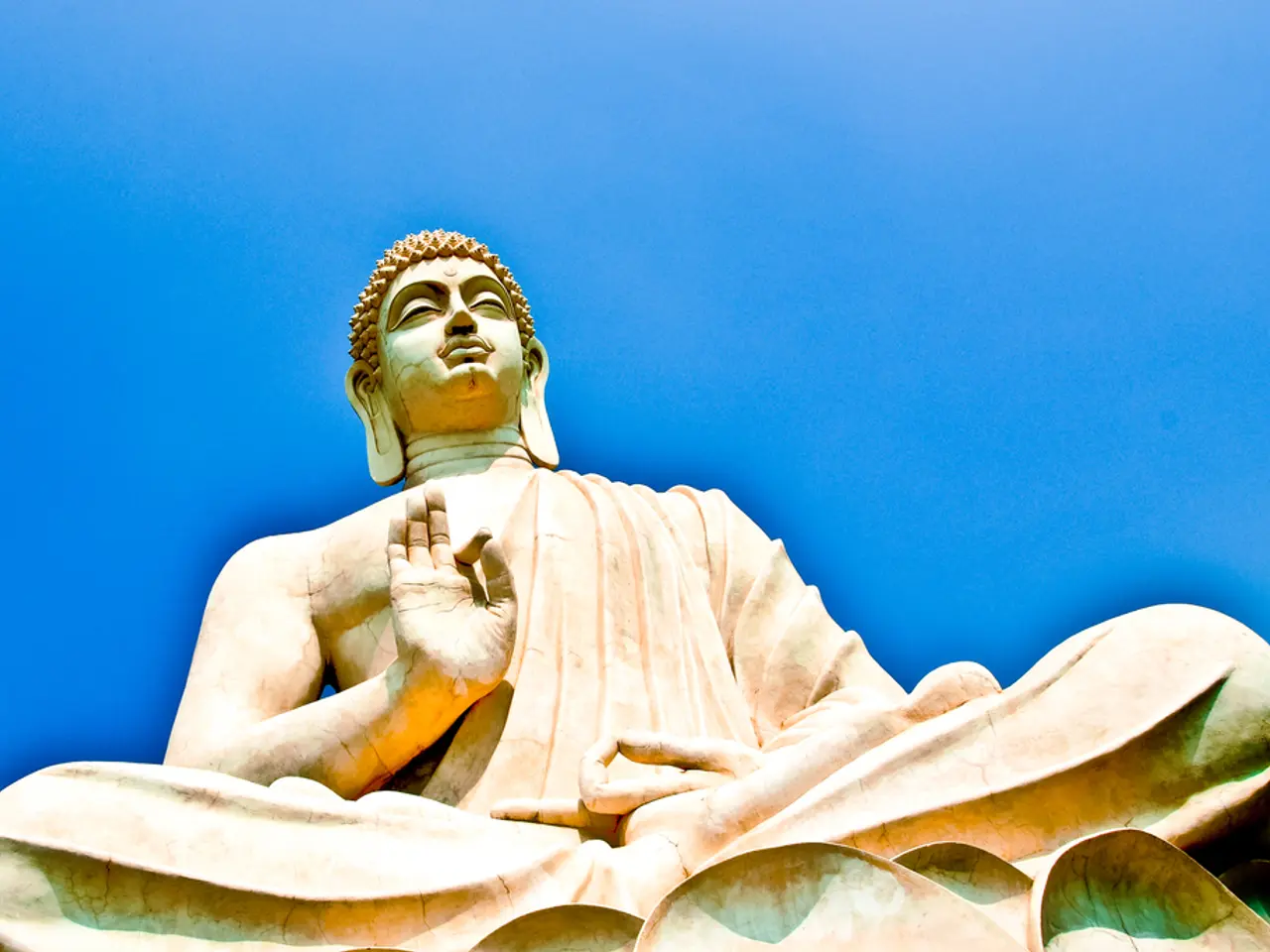Methods for Mindfulness: Defining Meditation, Advantages, and Practical Techniques
In the hustle and bustle of daily life, finding moments of peace and tranquility can be challenging. However, meditation offers a simple yet effective solution to reduce stress, anxiety, and tension. This ancient practice, with origins thousands of years old and different forms emerging from various cultures worldwide, is a powerful tool for self-improvement and well-being.
Meditation techniques are diverse, catering to various preferences and needs. For beginners, breath awareness, body scan, guided meditation, walking meditation, and loving-kindness are some key techniques to explore. Breathing meditation, for instance, involves focusing on the rhythm of your breath, starting with a few deep breaths and then maintaining attention on the inhale and exhale.
Body scan meditation, on the other hand, involves progressive attention to body parts, releasing tension as you focus on each area. A popular method used in body scan meditation is Jacobson's relaxation technique, where you tense and release muscles throughout your body.
Guided breathing meditations are available online, providing assistance for those new to the practice. Walking meditation can be done actively or passively, focusing on the physical sensation of walking. In loving kindness meditation, you think of a happy moment, repeat positive affirmations, and send them to loved ones.
Upon finishing a meditation session, it's essential to notice how you feel overall, take a deep conscious breath, and smile as you come back to your surroundings. This practice helps develop present-moment awareness, improve concentration, and increase mental clarity.
Meditation may assist in managing anxiety, chronic pain, and other health issues by encouraging a nonjudgmental awareness of thoughts and feelings. Benefits also include emotional calmness, increased well-being, lengthened attention span, sharper memory, and kinder feelings towards oneself and others.
To get started with meditation, beginners should find a quiet, comfortable place to sit and set a short time limit (5–10 minutes). Focus attention on the breath, noticing the inhale and exhale, and when the mind wanders, gently bring it back to the breath without judgment. End the session with a moment of kindness and self-reflection to close the practice.
Starting with short, consistent daily practice is recommended to build the habit and experience benefits. Incorporating mindfulness into daily routines, such as mindful morning activities, can complement formal meditation sessions.
For resources, beginners can use meditation apps or online guided meditations, videos from mindfulness websites, and beginners’ guides such as those found on Mindful.org or yoga-centered sites. Embrace the journey of self-discovery, be curious, and try different types of meditation to find what works best for you.
Engaging in meditation can be a valuable addition to one's health-and-wellness routine, particularly for mental health. Given the diversity of meditation techniques, exploring breath awareness, body scan, guided, walking, and loving-kindness meditations can offer an avenue for personalized stress management and emotional balance. For instance, by focusing on the rhythm of breath in breathing meditation, or progressively releasing tension in body scan meditation, practitioners may experience a reduction in anxiety and improved mental health overall.




